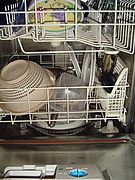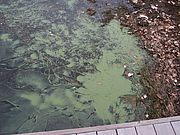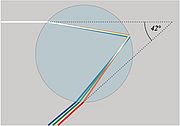Keep the lake in mind when loading your automatic dishwasher and use phosphorus-free detergent. Check the labels on the products you buy to ensure the brand you choose doesn’t include phosphorus to avoid sending excess nutrients into our waterways.
Research and lobbying by LCC led to passage of legislation in Vermont to ban phosphates from household dishwasher detergents in 2010. Similar legislation in NY was introduced earlier this year (S.3780 and A.8914) but has not yet passed. According to independent studies by Consumer Reports, phosphate-free automatic dishwasher detergents work as well as those with phosphates.
For more lake friendly tips, check out the Learn and Get Involved sections of our website and consider taking our Lake Protection Pledge. Read...
As summer fades to winter blue-green algae blooms become but a memory. But what actually happens to the algae? Well, it depends on the species. Some blue-green algae produce specialized resting cells called akinetes that settle to the bottom of the lake and essentially hibernate through the winter. Development of akinetes is triggered by both declining light levels and declining temperature. Other blue green algae produce colonies that are either buoyant or not. As winter approaches, change in light and water temperature lead to an increase in proportion of non-buoyant colonies. These cells settle to the bottom where they continue to remain active and even divide, though at a much reduced rate. Come spring, when wind and wave stir the bottom sediments, the algae are re-suspended. Models developed in the Netherlands suggest that if there were no recruitment of algae from the bottom, summer blooms would be reduced by 50%. Read...
In early October, a rare meteorological phenomenon provided a treat for people lucky enough to be near the Crown Point Bridge. The waters north of the bridge became suffused with rainbow colors. Though everyone is familiar with rainbows arcing in the sky, seeing them sitting atop the water is much less common.
Rainbows form when the sun’s rays pass through water droplets and reflect back to an observer. Once the light enters the water droplet it bends, with different wavelengths varying in the degree to which they are bent. Reds bend 42 degrees while blues bend about 40 degrees. The light then bounces off the back of the water. Thus in order to see a rainbow, light must shine from behind the observer while water droplets are in the air in front of the observer.
In order to see the different colors of the rainbow, light must reflect off different water droplets. Those slightly higher in the atmosphere reflect reds, while the lowest droplets reflect blues.
Read...



